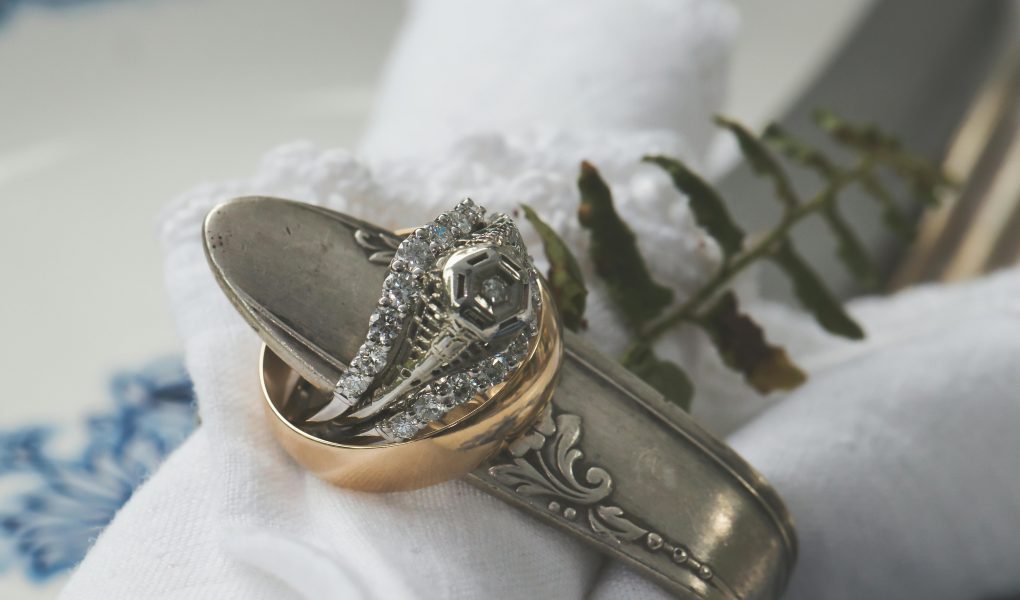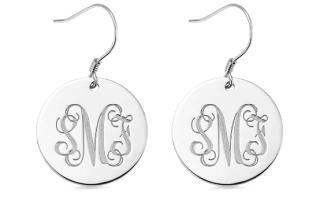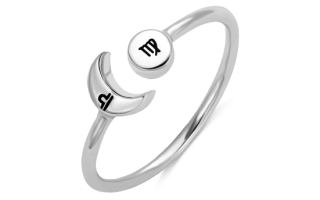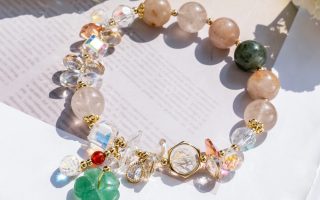Cold weather impacts a lot more than just our comfort—it affects the items we wear, including jewelry. Many people notice their rings feeling looser in the winter, or maybe observe a duller shine on their favorite gemstone pieces as the season progresses. While winter brings colder temperatures, drier air, and unpredictable weather conditions, it also changes how metals, gemstones, and organic jewelry materials respond to their environment. Just like we bundle up and moisturize in winter, jewelry, too, requires special care during the cold months to maintain its look and quality.
This article will explore how cold weather uniquely affects jewelry, breaking down the science behind metal contraction, gemstone sensitivity, and the drying effects of cold air on organic materials. By diving into these topics, we’ll understand why certain pieces might feel different in winter, why some stones can lose their shine, and how simple precautions can make a big difference. From understanding how different jewelry materials respond to chilly temperatures to learning tips on winter care, this guide will cover all you need to know to keep your jewelry looking its best year-round.
So, whether you’re a jewelry enthusiast or simply curious about why your favorite ring seems looser on a snowy day, read on. We’ll provide a practical breakdown of cold weather’s effects and offer expert care tips to ensure your jewelry stays as beautiful and comfortable in winter as it does in any other season.
How Cold Affects Jewelry Metals
Jewelry metals, even those known for durability like gold, silver, and stainless steel, aren’t immune to the effects of cold weather. Winter’s drop in temperature can impact these metals, making your rings, bracelets, or necklaces feel different, either through tighter fits, looseness, or general discomfort. So, what exactly happens to metals in cold conditions? Let’s break it down.
Metal Contraction: The first thing to understand is that metals naturally contract when exposed to cold temperatures. This contraction happens at the atomic level – when metals get cold, their atoms slow down and pack closer together, causing the metal to slightly shrink. Though the change in size is usually subtle, it can be noticeable on jewelry, especially rings and bracelets. You might find that rings fit looser in winter than in warmer months due to this contraction effect. Or, if a ring already has a looser fit in summer, it might feel precariously loose come winter.
Effect on Jewelry Fit: This shrinkage can cause some comfort and fit issues, particularly if you wear fitted jewelry. For instance, a gold ring that felt snug during the summer might start slipping off in the cold, posing a risk of it getting lost. Conversely, if a ring felt slightly tight before, the cold could make it uncomfortable to wear. Fingers themselves shrink slightly in response to cold as blood vessels constrict to preserve warmth, which can further affect how jewelry fits. Loose-fitting jewelry becomes a risk during winter – a slightly loose bracelet or ring could fall off without you noticing.
Fragility in Chains and Fine Details: Jewelry with delicate structures, like thin chains or intricate filigree designs, also face challenges in the cold. Chains, even those made of durable materials like gold and silver, can become more rigid and brittle in lower temperatures. The cold can weaken links, increasing the chance of them breaking if snagged. This fragility can also extend to solder points, where two pieces of metal are fused. Thin, complex designs are especially vulnerable since intricate details can add stress points that react poorly to rapid temperature changes.
Cold Metal and Skin Temperature: Cold metal against warm skin can be uncomfortable, even irritating for some. Stainless steel, for instance, takes longer to warm up on the skin than gold or silver, so wearing it on a frosty day can feel especially chilly and uncomfortable. If you wear jewelry over clothing layers, like bracelets over sleeves or necklaces tucked into scarves, the cold metal can take on the outdoor temperature even faster.
Solutions to Protect Metal Jewelry: Thankfully, there are ways to minimize the effects of cold on your metal jewelry. One simple trick is to avoid direct exposure to cold – wearing gloves can help keep rings and bracelets protected, while a scarf or collar can shield a necklace. For rings that feel too loose, temporary adjusters made from silicone or rubber are widely available and can add enough snugness to prevent slips. Not only does this add security, but it also reduces the direct chill on your skin.
By understanding the science behind cold’s impact on metals and taking a few precautions, you can keep your jewelry safe, comfortable, and intact all winter long.
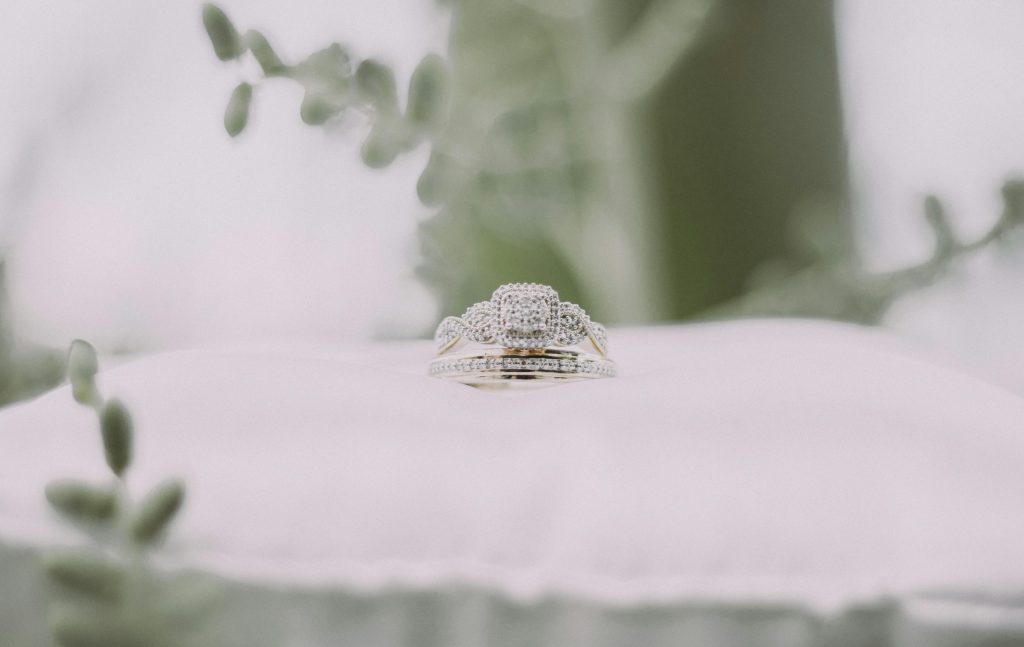
The Impact of Cold on Precious Stones
Precious stones, often cherished for their beauty and durability, are not immune to the effects of cold weather. While their hardness varies—ranging from the robust diamond to the softer opal—these gemstones share a sensitivity to temperature changes that can compromise their appearance, durability, and even color. For jewelry enthusiasts, understanding how cold affects these gems is crucial for preventing irreversible damage.
Thermal Expansion and Contraction: Just like metals, precious stones respond to temperature fluctuations by expanding and contracting. When exposed to cold, the stone contracts, which can cause internal stress, particularly in stones that already have natural fissures or inclusions. For instance, stones like emeralds, known for their inclusions, can become more prone to cracking under cold conditions. This internal tension, which might not be visible on the surface, can lead to significant damage if the stone is subjected to sudden temperature changes.
Loss of Luster and Hydration: Some precious stones, such as opals and turquoise, are porous and contain small amounts of water within their structure. During the winter months, especially in heated indoor environments, the air tends to be dry. This can lead to a loss of hydration in these stones, resulting in a dull or lifeless appearance. Opals, in particular, are known for their vibrant play of color, which is closely tied to their moisture content. When dehydrated, they can lose their brilliance and may even develop cracks or crazing patterns. To prevent this, it’s advisable to store these stones in slightly humid conditions, like keeping a damp cloth nearby in their storage box.
Color Changes in Cold Weather: The color of certain gemstones can also be affected by cold temperatures. For example, amethyst and citrine, both varieties of quartz, might show changes in hue if exposed to extreme cold for prolonged periods. Although these color changes can sometimes be temporary, they can become permanent with extended exposure to harsh conditions. Gems like these, when worn in winter, should ideally be kept warm against the skin or protected under layers of clothing to mitigate drastic temperature changes.
Avoiding Thermal Shock: One of the most significant threats to gemstones during the winter months is thermal shock. This phenomenon occurs when a stone is rapidly moved from one extreme temperature to another—such as going from the cold outdoors to a warm indoor environment. For instance, if you wear a ring set with a precious stone outside in freezing temperatures and then immediately expose it to the warmth of a heater, it can crack or fracture due to the sudden shift. To minimize this risk, it’s best to remove such rings before entering a warm environment and allow them to adjust gradually to the temperature change.
Caring for Precious Stones in Winter: To safeguard your precious stones against the cold, it’s essential to take a proactive approach. Store your gemstone jewelry in a protective case, preferably one that helps maintain humidity. Avoid wearing porous stones in very cold conditions, or at least limit their exposure to outdoor elements. When cleaning these stones, use a soft, damp cloth rather than harsh chemicals, as these can exacerbate any damage caused by temperature fluctuations.
Regular professional inspections and cleaning by a jeweler can also help maintain the integrity of your gemstone jewelry. Jewelers can offer specific advice tailored to the types of stones you own, ensuring that you keep them beautiful and intact despite the challenges of cold weather. With the right care and understanding, your precious stones can continue to shine brightly all winter long.
The Effects of Cold on Pearl Jewelry
Pearls are often considered delicate and elegant pieces of jewelry, but they are particularly sensitive to temperature changes, especially cold weather. Unlike precious stones and metals, pearls are organic materials formed by mollusks, which makes them vulnerable to harsh environmental conditions. Understanding how cold affects pearls is essential for preserving their beauty and longevity.
Composition and Sensitivity of Pearls: Pearls are primarily composed of layers of nacre, a material that consists of microscopic crystals of aragonite and a protein called conchyolin. This unique composition gives pearls their luster and iridescence, but it also means they are highly sensitive to changes in temperature and humidity. Cold weather can dry out the nacre, leading to a loss of moisture that is crucial for maintaining a pearl’s natural shine. In winter, when indoor heating reduces humidity levels, pearls can become dull and lackluster, losing their vibrant appearance.
Dehydration and Dullness: One of the most significant risks to pearls during the winter months is dehydration. When exposed to cold, dry air, pearls may lose some of their internal moisture, resulting in a lack of luster. This dehydration can make them appear lifeless, and in extreme cases, it may even lead to cracking or surface damage. To prevent this, it’s advisable to store pearls in a slightly humid environment, such as a soft cloth bag, and avoid exposing them to excessive dry heat. Additionally, it’s wise to avoid storing pearls in airtight containers for prolonged periods, as this can trap moisture and create an unsuitable environment.
Risks of Chipping and Cracking: Cold temperatures can also increase the risk of chipping and cracking in pearl jewelry. As the nacre becomes more rigid due to the cold, pearls can be more susceptible to physical stress. This is especially true for pieces that have been worn frequently and may have pre-existing imperfections. Thin strands of pearls or delicate pearl earrings are particularly at risk; even minor impacts can result in chipping, compromising the integrity of the piece. Therefore, it’s essential to handle pearl jewelry with care, especially when the temperature drops.
Protecting Pearls from the Cold: To protect pearls from the harsh effects of winter weather, consider several practical strategies. First, avoid wearing pearl jewelry in extremely cold temperatures. If you plan to go outdoors, consider leaving your pearl accessories at home or ensuring they are protected under layers of clothing. When indoors, keep your pearls away from direct heat sources, such as radiators or fireplaces, which can further exacerbate dehydration.
Additionally, when cleaning pearls, it’s best to use a soft, damp cloth rather than harsh chemicals or abrasive materials. Regularly wiping pearls after wearing them can help remove oils and dirt that may accumulate over time while preserving their natural moisture. A gentle wash with lukewarm water followed by air drying can also be beneficial.
Seasonal Maintenance: Winter is an excellent time to inspect your pearl jewelry. Check for any signs of wear, such as loose knots in pearl strands or surface scratches. If you notice any damage, consult a professional jeweler who specializes in pearl care. They can provide repairs and recommendations to help maintain the integrity of your pieces.
With proper care and attention, your pearls can endure the winter months while maintaining their exquisite beauty. By understanding the unique needs of these organic gems, you can ensure they remain stunning additions to your jewelry collection for many seasons to come.
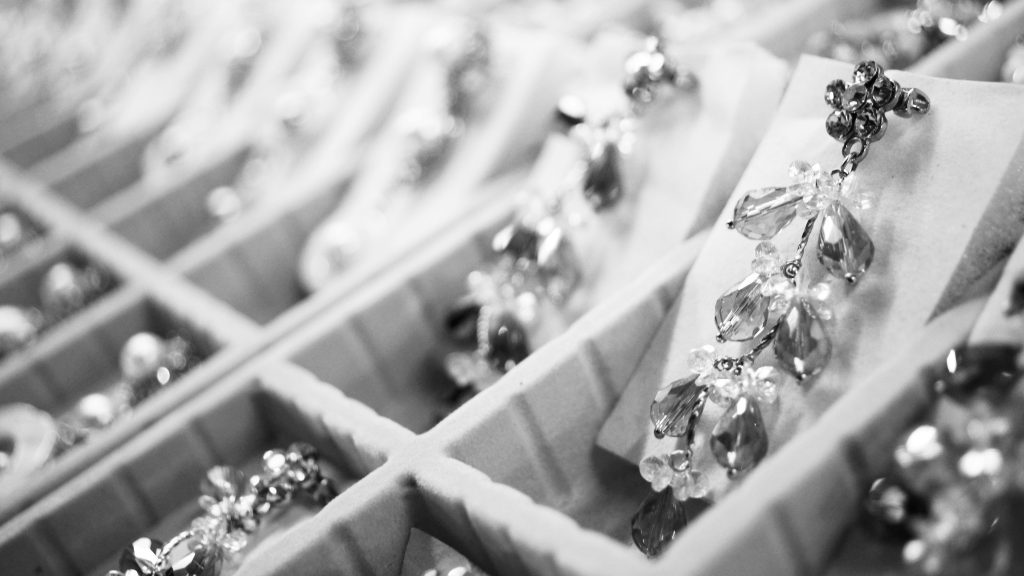
The Effects of Cold on Gemstone Settings and Jewelry Design
When discussing the impact of cold weather on jewelry, it’s essential to consider not only the stones themselves but also how they are set and the overall design of the pieces. The materials and techniques used in jewelry design can influence how cold affects the jewelry, including potential damage, fit issues, and wearability. Understanding these dynamics is crucial for jewelry owners looking to protect their beloved pieces during the winter months.
Material Considerations in Settings: Jewelry settings can be made from various metals, such as gold, silver, platinum, or even more modern materials like titanium and stainless steel. Each metal reacts differently to cold. For instance, while gold and platinum are more resistant to temperature changes, silver can become brittle in extreme cold. This brittleness can lead to issues like cracking or breakage in settings that are intricate or finely wrought. When cold weather hits, these metals can lose some of their flexibility, making them more prone to stress fractures.
Stone Settings and Stability: The way gemstones are set into jewelry also plays a crucial role in how cold affects the overall piece. For instance, prong settings, which are common for rings, can become loose in cold temperatures as the metal contracts. A loose stone poses a significant risk, as it could easily fall out if the ring is bumped or jostled. On the other hand, bezel settings provide a more secure hold on stones, reducing the likelihood of stones becoming dislodged in cold weather. However, even bezel settings can be affected if the metal becomes too rigid, making it essential to regularly check the tightness of your settings, particularly during colder months.
Design Implications for Cold Weather: The design of jewelry can also influence its durability in cold conditions. Elaborate designs that include delicate filigree work or numerous small components can be more vulnerable to damage. These intricate pieces are often more prone to bending or breaking when exposed to extreme temperatures. Jewelry with multiple layers, such as stacked rings or layered necklaces, can create friction between the pieces, leading to scratches and wear over time, especially when the metals are cold and less malleable.
Jewelry Care in Winter: To protect jewelry settings and designs from the adverse effects of cold weather, it’s crucial to adopt a proactive approach. One effective strategy is to rotate your jewelry. Instead of wearing the same pieces every day, alternate between items to give each one a break. This practice not only allows for air circulation around the jewelry but also reduces the wear and tear on any one piece.
When venturing out into cold weather, consider wearing jewelry that is less intricate and made from more robust materials. Avoiding overly delicate pieces in harsh conditions can minimize the risk of damage. If you’re attending an event or occasion where you want to wear your fine jewelry, ensure that you have a safe place to store it when not in use, such as a padded jewelry box, which can help insulate it from temperature fluctuations.
Regular Inspections and Maintenance: Performing regular inspections on your jewelry is essential for catching potential issues before they become significant problems. Look for signs of wear, such as loose stones or bent prongs, and address any concerns promptly by visiting a professional jeweler. Many jewelers offer seasonal maintenance checks that can include tightening settings, polishing the metal, and cleaning stones, all of which are particularly beneficial as the weather changes.

How Cold Weather Affects Jewelry Wearability and Comfort
Winter doesn’t just impact jewelry’s appearance; it can also make pieces feel uncomfortable to wear. Skin tends to contract in cold weather due to restricted blood flow, which impacts jewelry fit, particularly rings. Cold air can also worsen skin sensitivities, making some jewelry pieces less wearable in winter than in warmer seasons.
Effect on Skin and Jewelry Fit: As temperatures drop, blood flow to extremities, like fingers, decreases, which makes skin and soft tissues shrink slightly. This often makes rings feel looser and more prone to slipping off. Additionally, bracelets and watches may feel uncomfortable due to the cold metal against sensitive winter skin, which is often drier and more prone to irritation.
Sensitivity and Metal Allergies: Winter can worsen sensitivities to certain metals, especially nickel and copper, which are sometimes mixed into silver and gold alloys. Dry, chapped skin is more susceptible to irritation, and prolonged exposure to metal can cause red, itchy patches. Some people find that their skin reacts to metals more intensely in winter, even if the jewelry has been previously comfortable.
Making Jewelry Comfortable in Winter: To maintain comfort, consider switching to hypoallergenic jewelry during the colder months if you experience skin sensitivity. For rings, resizing might be an option if they become too loose, though temporary adjusters or guards can be a less permanent solution. Moisturizing the skin around jewelry pieces can prevent irritation, and wearing fabric liners, like gloves under rings or scarves with necklaces, can reduce direct metal-to-skin contact.
Conclusion
Cold weather impacts more than we realize, and jewelry is no exception. With metal contraction, gemstone sensitivity, humidity fluctuations, and the effects of dry air on organic materials, winter creates a challenging environment for keeping jewelry in top shape. By understanding the science behind these changes, jewelry lovers can make small adjustments to their care routine that make a big difference.
Whether it’s the loosening fit of a ring, a gemstone’s loss of shine, or the brittleness of a cherished pearl necklace, winter’s effects don’t have to be a mystery. Knowing how to store jewelry, manage humidity, and protect delicate materials empowers you to preserve each piece’s beauty and longevity.
So, as you bundle up this winter, remember that your jewelry deserves a bit of care, too. With these tips, you can keep your favorite pieces comfortable to wear and looking just as beautiful in winter as they do throughout the year. After all, each piece tells a story—and with a bit of protection, you can ensure that story continues year after year.
